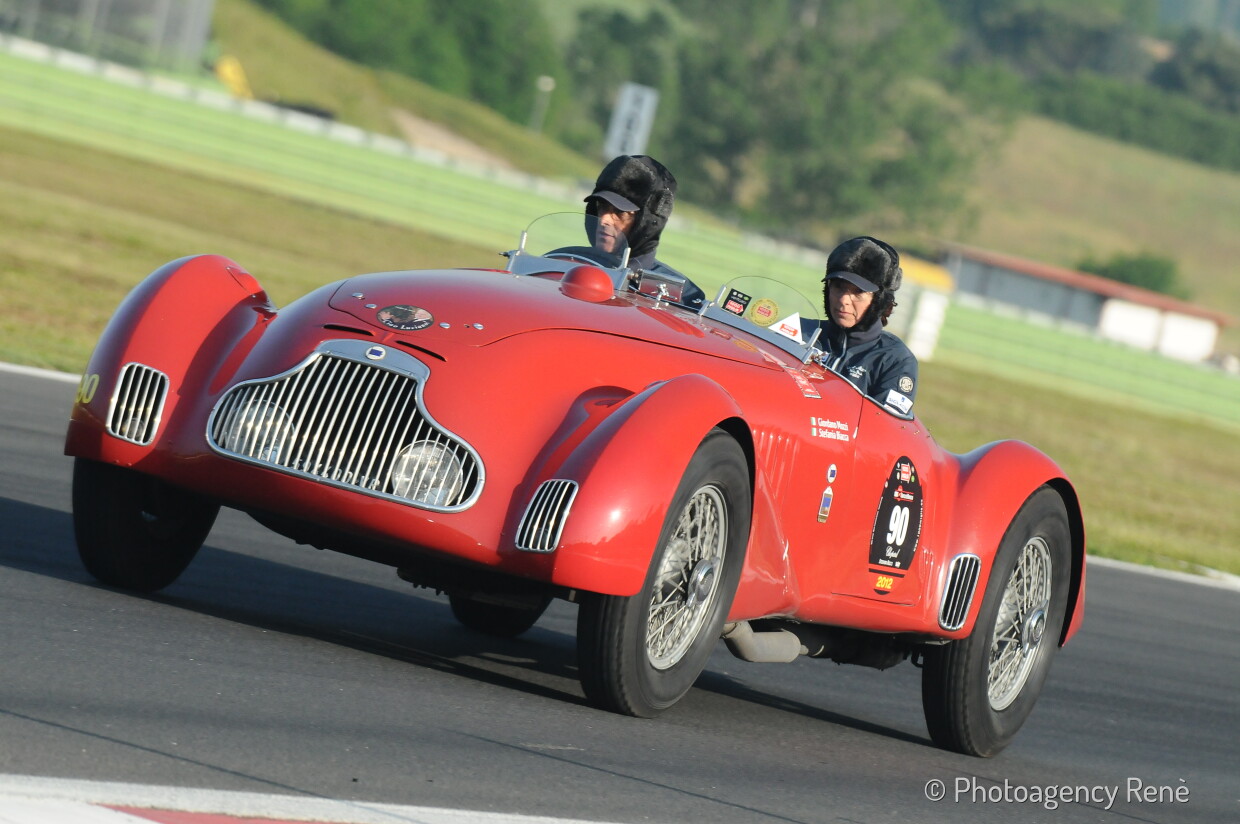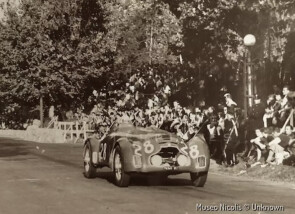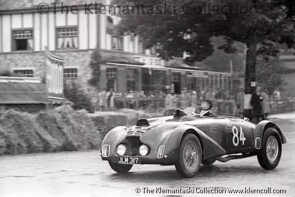
1938 Lancia Astura Mille Miglia Sport
ON/OFF
Why am I an Automotive Masterpiece?
L. Limited edition cars
no. 2 manufactured
The Lancia Astura was a car produced by the Turin-based company from 1931 to 1939. In the early 1930s, Lancia’s latest model was the large Dilambda (launched in 1929), while the Lambda—after nearly a decade in production—was due to be replaced. The Dilambda featured a V8 engine with a 4-liter displacement, whereas the Lambda, originally equipped with a 2.1-liter engine, reached over 2.5 liters in its final series. Although the Dilambda retained its flagship status, Lancia decided to replace the Lambda with two new models aimed at different customers: the Artena, a 4-cylinder car with a displacement under 2 liters, and the Astura, fitted with a 2.6-liter V8 engine. The two models were mainly differentiated by their engines but also had different wheelbases: the Artena had a 299 cm wheelbase, while the Astura’s was 19 cm longer to accommodate the larger engine. Unlike previous Lancia models, the Astura was named after a historic castle near the Roman city of Nettuno. Its V8 engine, with a 19° angle between banks, was a simplified and downsized version of the Dilambda unit, with a displacement of 2606 cc and an output of 72 hp at 4000 rpm. In addition to a cast-iron engine block, triple chain-driven distribution, and a self-cleaning oil filter, the engine’s most distinctive feature was its unique two-piece cylinder head: the lower part (cast iron) housed the valves, while the upper part (aluminum) contained the rocker arms and their shaft, with the central camshaft rotating between the two. The water-based cooling system, derived from the Artena, included a thermostat-controlled throttling device. The Astura also shared the centralized lubrication system with the Artena. Moving away from the unitary body construction of the Lambda, both the Astura and the Artena employed a chassis made of two vertical box-section side members reinforced by an X-shaped brace. Two longitudinal round tubes branched from a central cross-member and were integrated into the front ends of the side members, which slightly converged. The suspension system combined different solutions: at the front, Lancia’s classic layout was retained—though without the diagonal braces that, in the Lambda, had connected the radiator frame to the suspension cylinders, now made redundant by improved chassis rigidity—while the rear used a conventional live axle with semi-elliptical leaf springs and Siata friction shock absorbers. Powered by a Zenith double-barrel carburetor, the Astura offered excellent performance thanks to its favorable power-to-weight ratio. The chassis weighed just under a ton (960 kg), and even the sedan version remained relatively light at 1,250 kilograms, enabling a top speed of around 125 km/h. While Lancia did produce a sedan version—available with either four windows and 4–5 seats or six windows and 6–7 seats—the Astura became the queen of custom coachbuilt cars of its era. Nearly all major Italian coachbuilders, as well as several international ones, created special-bodied examples. Notable names included Bertone, Boneschi, Borsani, Brianza, Castagna, Colli, Garavini, Ghia, Stabilimenti Farina, Touring, and Viotti, along with international firms such as Weinberger & Buhne, John Charles, Abbott, and Kevill Davies & March. A cabriolet by Pinin Farina, built in 1936, was awarded Best of Show at the Pebble Beach Concours d’Elegance in 2016. Another cabriolet by Stabilimenti Farina won the 1947 edition of the Concorso d’Eleganza Villa d’Este, although it never entered mass production. First introduced at the Paris Motor Show in October 1931, the Astura underwent a minor update about a year later (Second Series). In 1933, with the Third Series, more significant changes were introduced: the chassis was made available in two different wheelbase lengths, the engine displacement was increased (from 2.6 to 3 liters), power was improved by about 10 hp, and the braking system was revised. Further significant changes were made to the chassis in 1937 with the Fourth Series, which effectively replaced the discontinued Dilambda. Chassis from this series were often used for official government vehicles, mostly designed by Boneschi and Pinin Farina, sometimes with monumental proportions. The engine of the final Astura series also served as the basis for the Lince armored car, occasionally referred to as the “Astura armored car.” A total of 2,912 Astura units were produced.
Although the Astura was conceived as a luxury model, it was occasionally adapted for competition use—particularly under the “Sport Nazionale” category introduced in the late 1930s. This class, defined by the A.I.A.C.R.’s technical regulations (Attachment C), allowed lightly modified road cars to compete in long-distance events. A few Astura chassis were specially prepared by private teams, often with tacit support from Lancia itself, to enter endurance races such as the Mille Miglia.
One of the most notable examples is chassis no. 413207, now preserved in the Nicolis Museum. This car was commissioned in 1939 by the Milanese Scuderia Ambrosiana—founded by Giovanni Lurani and Franco Cortese—for Luigi “Gigi” Villoresi, one of their top drivers. The chassis was entrusted to Carrozzeria Colli, which created a lightweight open body tailored to competition use. The V8 engine was upgraded with an experimental hemispherical cylinder head, inspired by the one developed for the Aprilia, raising output to approximately 110 hp—significantly more than the 82 hp of the standard version. The car was entered in the 1940 Mille Miglia, but Villoresi was forced to withdraw after a road accident during pre-race testing. After the war, chassis 413207 continued its racing career with several Italian drivers, achieving notable results with Franco Cortese. Later, it was sold to British racers John Gordon and David Lewis, who entered it in events such as the 1948 Mille Miglia, the Grand Prix International 24 Heures de Spa the same year, and the 1949 Mille Miglia. In its later life, the car was reportedly used for smuggling valuable Swiss watches across the border. Seized by Swiss authorities, it remained forgotten in a warehouse until rediscovered by Luciano Nicolis, who repatriated and restored it. Today, the car is a celebrated part of his museum’s collection and continues to appear at major international concours and historic motoring events.







